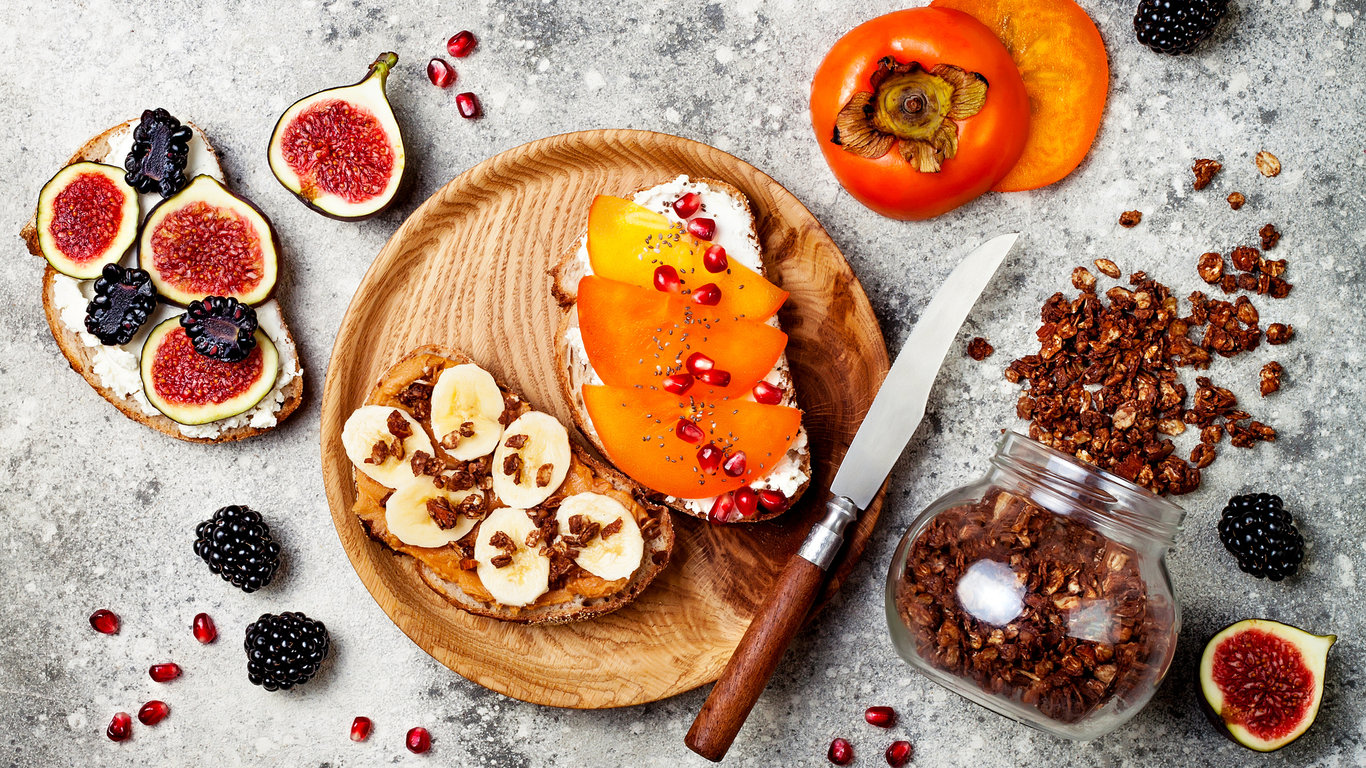
“Superfoods” is a term used to describe foods that are high in nutrients and, most of the time, low in calories. Such foods provide many healthy nutrients – such as vitamins and minerals — but not many unhealthy ones – such as trans fats, salt, and sugar.
Many of these wonder foods are plant based. With most, you can eat quite a lot of them without feeling guilty or packing on a few extra pounds. In fact, these may be the closest thing to a magic diet pill there is.
24/7 Tempo consulted several sources, including the National Institutes of Health, to compile a list of fall superfoods that can help with weight loss.
Maintaining a healthy weight and remaining in shape is not an easy endeavor. If it were, everyone would do it and the obesity rate among U.S. adults would not be 40%. It takes a huge amount of effort and willpower to exercise on a regular basis, and, most importantly, to eat a healthy, balanced diet. Knowing what to eat is often the tricky part – here are snacks that are actually ruining your diet.
Determining which foods and drinks are better for weight loss than others can be difficult. There are many factors to consider — calories, sugar, fiber. And different people need different amounts of these ingredients each day. Some research has shown that high-fiber foods help with weight loss efforts because it doesn’t spike blood sugar levels and contributes to feeling full for longer.
Nutritionists and other experts always remind us that losing weight is mostly about the food, but exercising is important too. This is how long you need to exercise to burn off the calories from your favorite foods.
Click here to see 23 superfoods that help with weight loss.
Methodology
To compile a list of fall superfoods that help with weight loss, 24/7 Tempo first identified produce that are in season in the fall according to the U.S. Department of Agriculture. We then reviewed several sources, including the National Institutes of Health website and several online reviews of medical research to learn which of these fruits and vegetables may help with weight loss. Calories and fiber amount come from Nutritionix, a global nutrition database offering information on food, health, fitness, restaurants and food manufacturers.

Cauliflower
> Calories: 132 per head
> Fiber content: 13 g (52% of DV)
> Rich in: Vitamins C and K, folate, pantothenic acid
> Other health benefits: Decreased risk of some cancers and cardiovascular diseases
[in-text-ad]
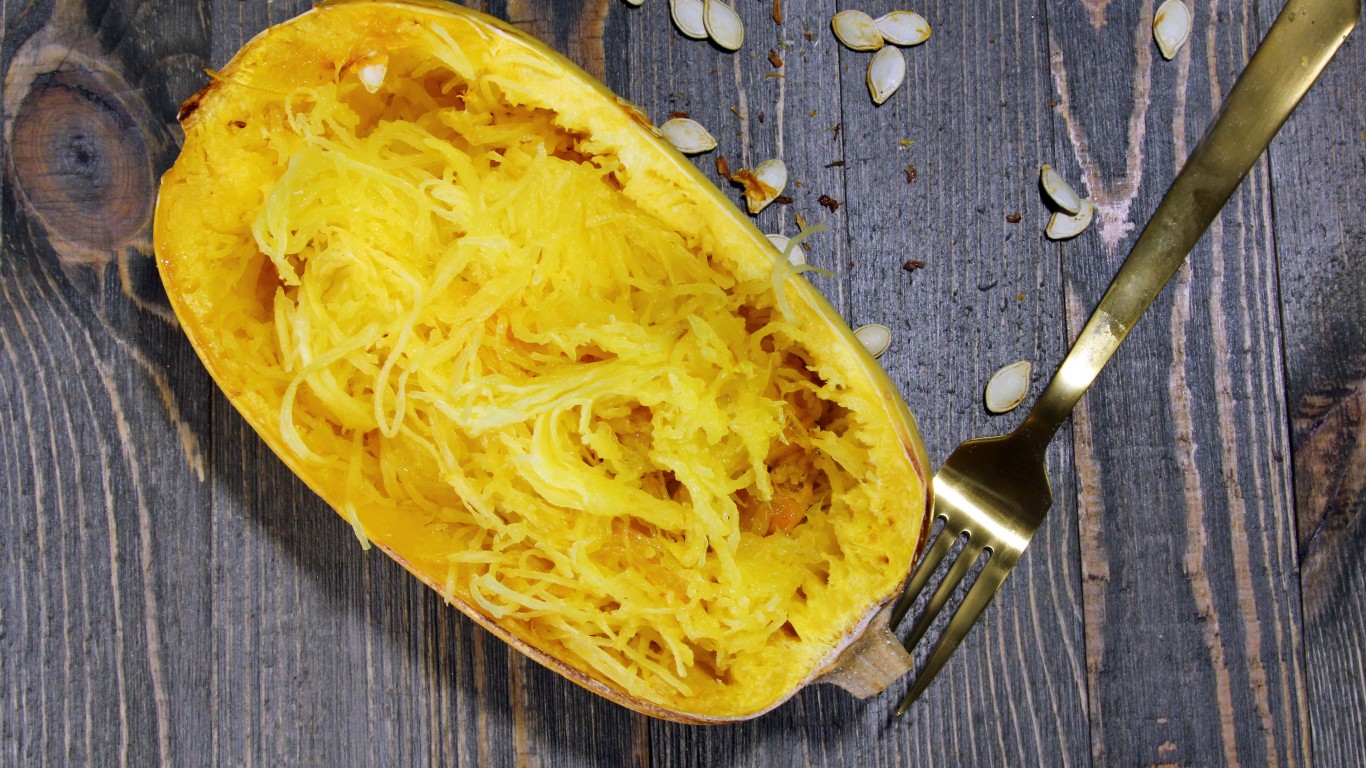
Spaghetti squash
> Calories: 259 each
> Fiber content: 13 g (52% of DV)
> Rich in: Vitamins A, C, calcium, iron
> Other health benefits: Helps prevent oxidative stress, may promote digestive health

Pomegranate
> Calories: 234 each
> Fiber content: 11 g (44% of DV)
> Rich in: Vitamin C, K, folate, and fiber
> Other health benefits: Promotes digestion, helps protect against cancer

Acorn squash
> Calories: 115 per cup
> Fiber content: 9 g (36% of DV)
> Rich in: Vitamins A, C, B6, thiamin, magnesium, iron
> Other health benefits: Boosts the immune system, anti-inflammatory
[in-text-ad-2]

Persimmon
> Calories: 118 each
> Fiber content: 6 g (24% of DV)
> Rich in: Vitamins A, C, potassium, copper, manganese
> Other health benefits: Antioxidant, may benefit heart health, reduce inflammation

Pears
> Calories: 101 each
> Fiber content: 5.5 g (22% of DV)
> Rich in: Fiber, copper, Vitamin C and K
> Other health benefits: Anti-inflammatory, may reduce risk of diabetes and heart disease
[in-text-ad]
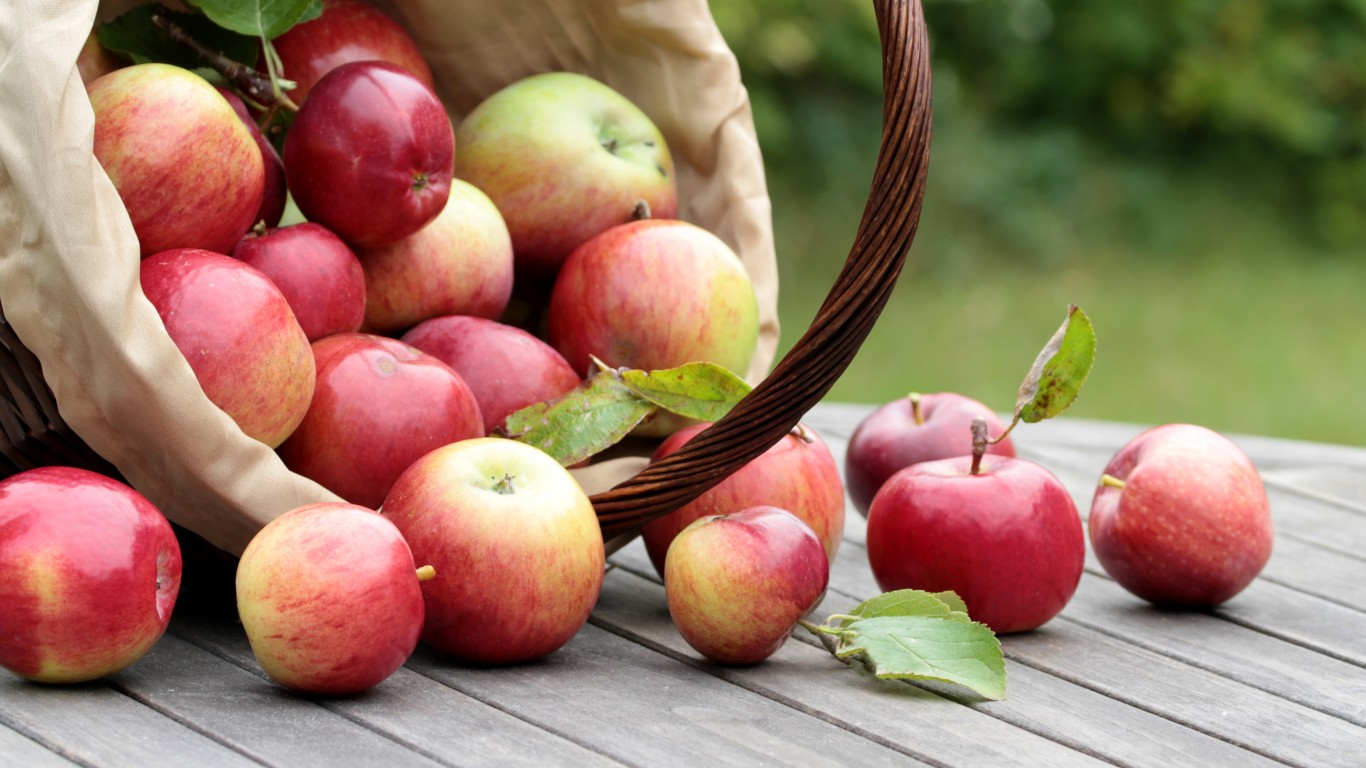
Apples
> Calories: 95 each
> Fiber content: 4.4 g (18% of DV)
> Rich in: Fiber and Vitamin C
> Other health benefits: Supports the immune system and heart health

Brussel sprouts
> Calories: 60 per 8 sprouts
> Fiber content: 4.4 g (18% of DV)
> Rich in: Vitamins K and C, folate, and fiber
> Other health benefits: Anti-inflammatory, digestive, and cardiovascular support

Cranberries
> Calories: 51 per cup
> Fiber content: 4 g (16% of DV)
> Rich in: Vitamin C, manganese, and fiber
> Other health benefits: Reduce inflammation and improve heart health
[in-text-ad-2]

Sweet potato
> Calories: 103 each
> Fiber content: 3.8 g (15% of DV)
> Rich in: Vitamin A, C, manganese, copper, fiber, potassium
> Other health benefits: Helps reduce inflammation and regulate blood sugar

Rainbow chard
> Calories: 35 per cup
> Fiber content: 3.7 g (15% of DV)
> Rich in: Vitamins A, C and iron
> Other health benefits: Antioxidant and anti-inflammatory benefits
[in-text-ad]

Parsnips
> Calories: 70 each
> Fiber content: 3.5 g (14% of DV)
> Rich in: Vitamin C, E and K, folate, magnesium
> Other health benefits: Helps prevent oxidative stress and decrease damage to your cells
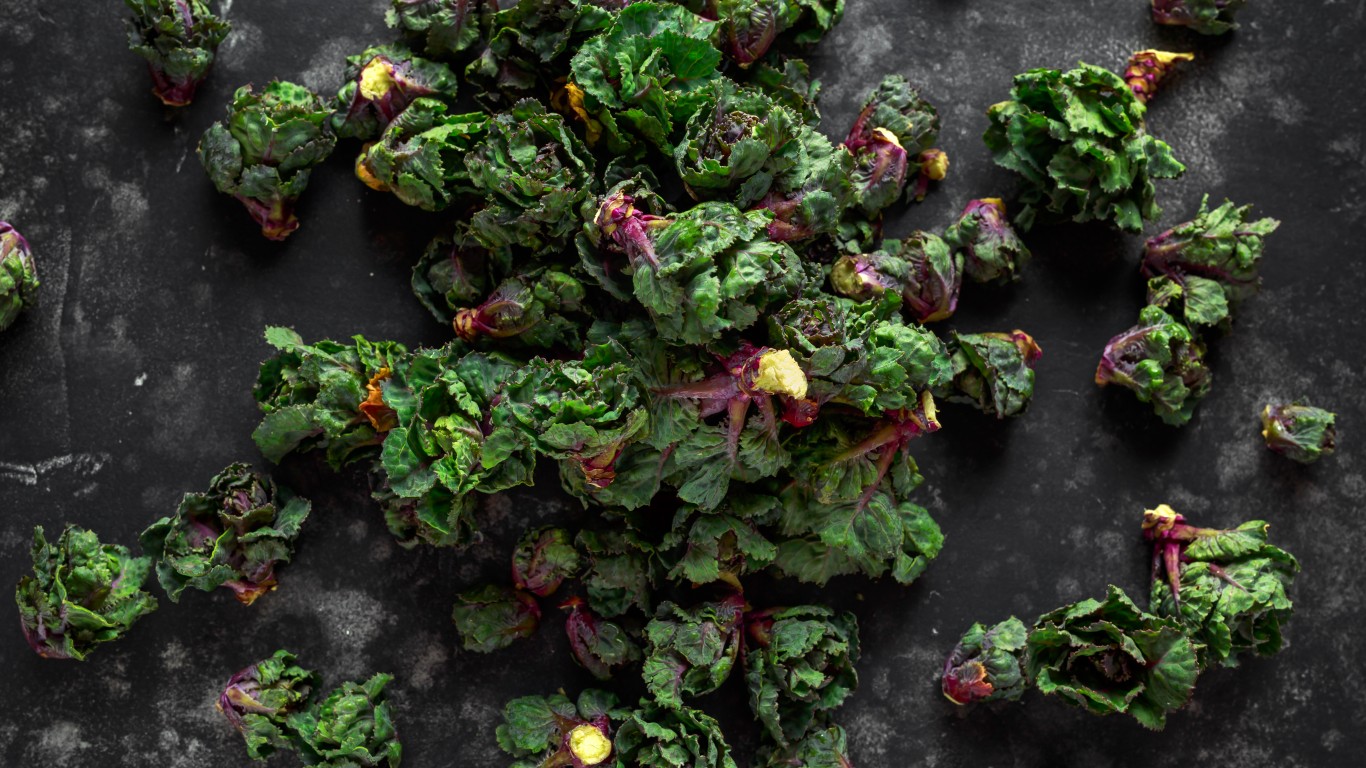
Kalettes
> Calories: 53 per 100 g
> Fiber content: 3.5 g (14% of DV)
> Rich in: Vitamins K and C
> Other health benefits: Helps with sleep and relaxation, lowers cholesterol, regulated blood pressure

Rutabaga
> Calories: 52 per cup
> Fiber content: 3.2 g (13% of DV)
> Rich in: Vitamin C, potassium, calcium, magnesium
> Other health benefits: Protects against oxidative stress and promotes bowel health
[in-text-ad-2]
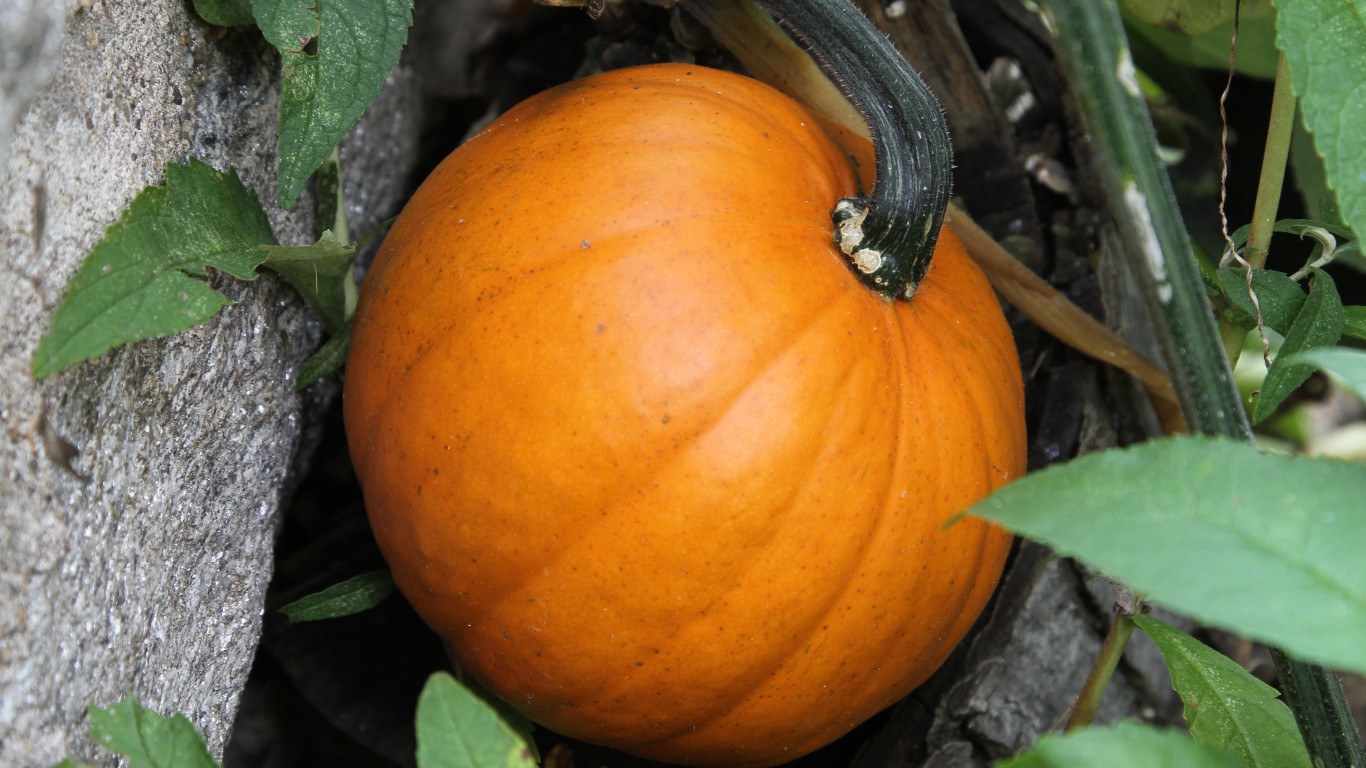
Pumpkin
> Calories: 49 per cup
> Fiber content: 2.7 g (11% of DV)
> Rich in: Vitamin A, C, potassium, copper, and manganese
> Other health benefits: Reduces risk of chronic diseases and boosts immunity
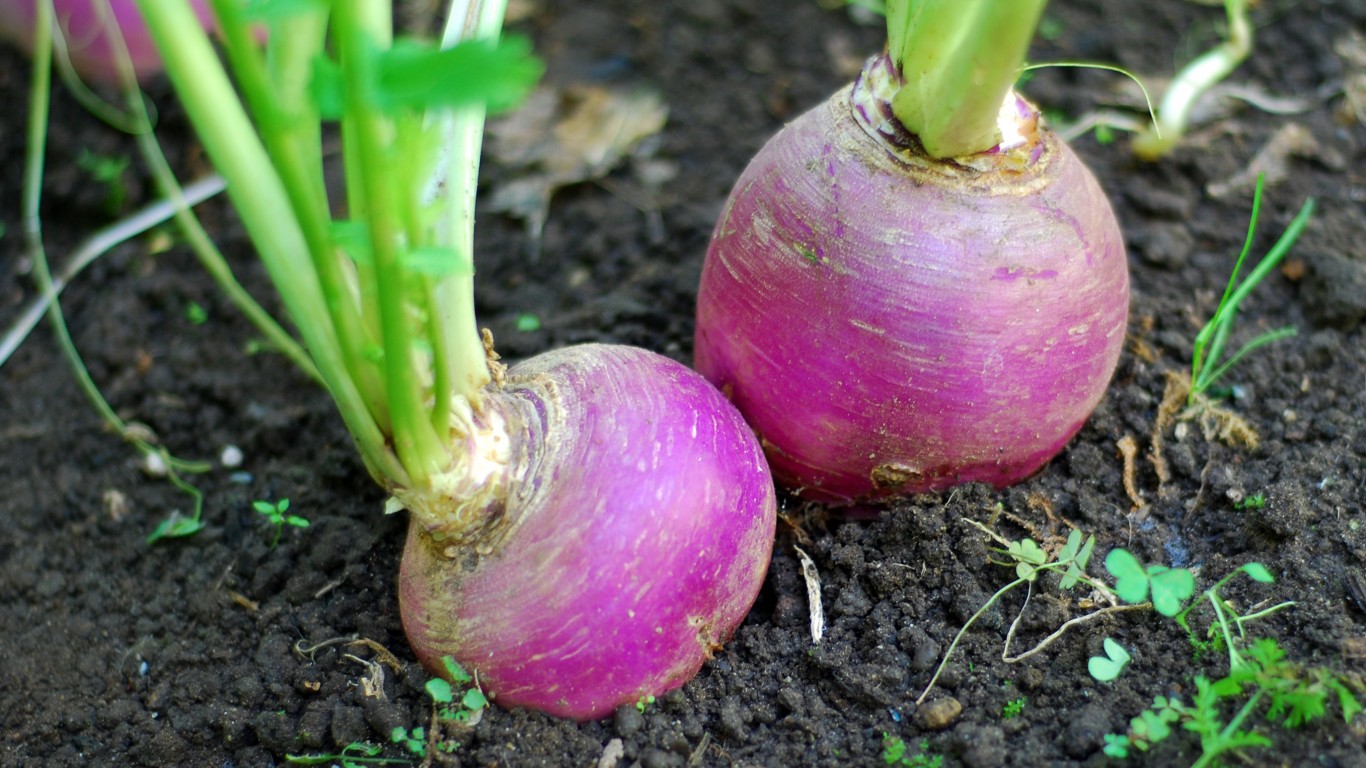
Turnips
> Calories: 26 each
> Fiber content: 2.4 g (10% of DV)
> Rich in: Fiber, Vitamin C, and potassium
> Other health benefits: Associated with lower risk of cancer, supports weight loss and digestion
[in-text-ad]

Garlic
> Calories: 22 per 5 cloves
> Fiber content: 0.3 g (5% of DV)
> Rich in: Manganese, Vitamin B6, Vitamin C, and copper
> Other health benefits: Heart and blood vessels support,

Kiwi
> Calories: 42 each
> Fiber content: 2.1 g (8% of DV)
> Rich in: Vitamins C and K, fiber, and copper
> Other health benefits: Protects DNA, controls blood sugar, improves asthma symptoms
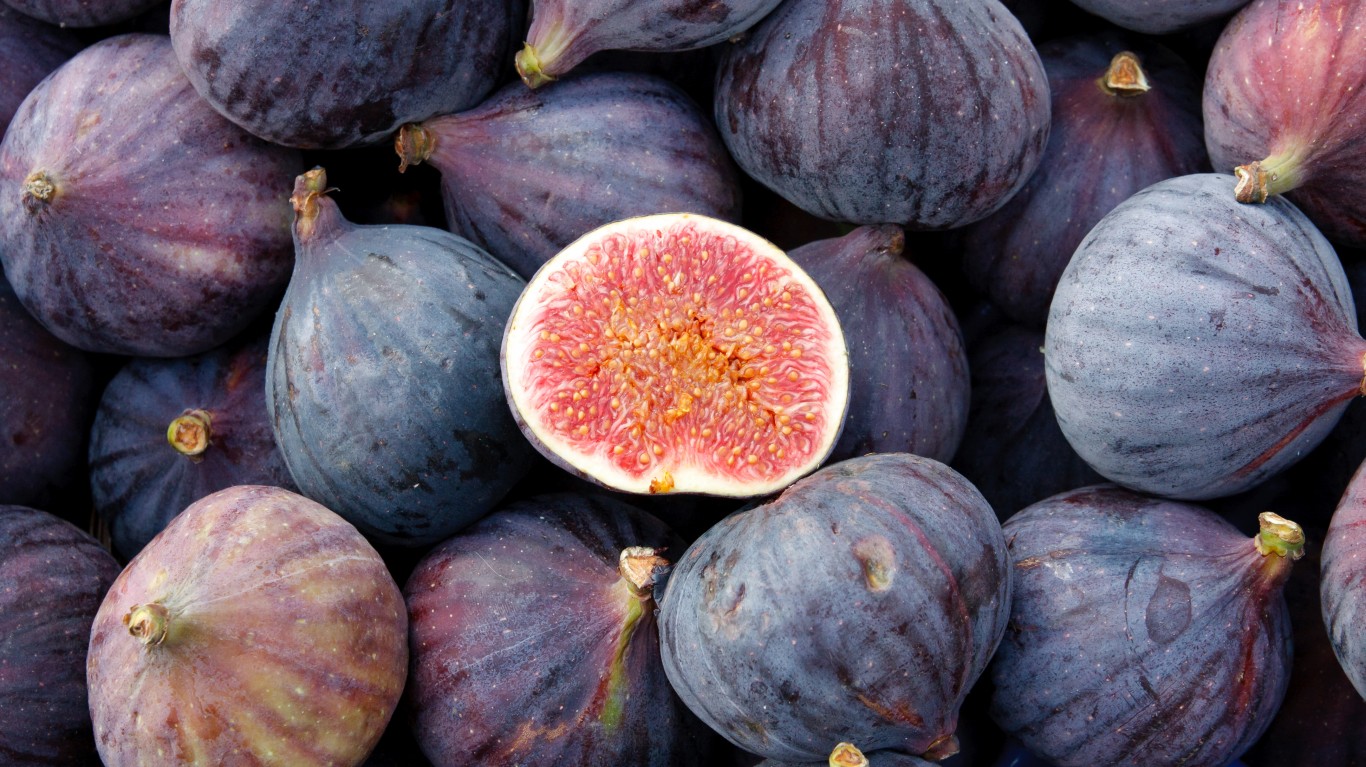
Figs
> Calories: 37 each
> Fiber content: 1.5 g (6% of DV)
> Rich in: Fiber
> Other health benefits: May reduce blood pressure, help with weight loss
[in-text-ad-2]
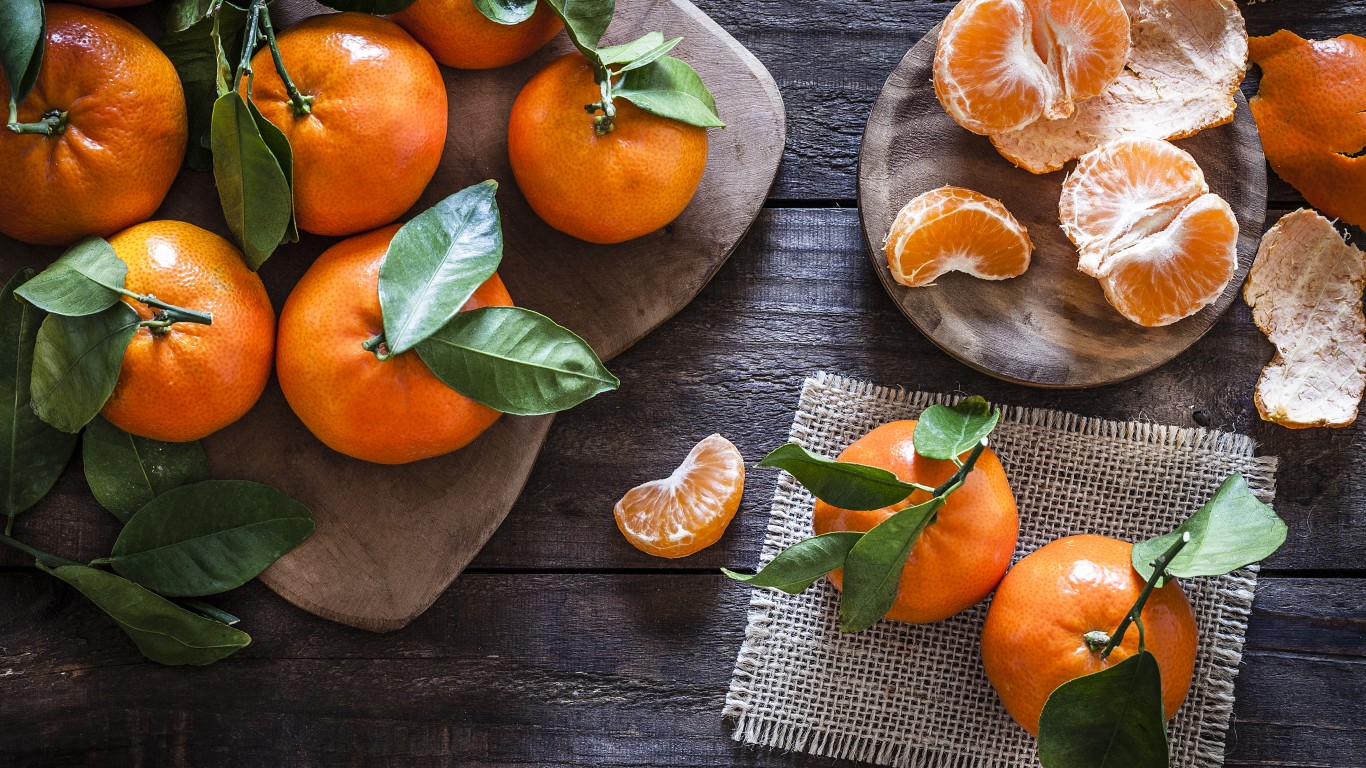
Tangerines
> Calories: 47 each
> Fiber content: 1.6 g (6% of DV)
> Rich in: Vitamins C, A, potassium, folate
> Other health benefits: Helps fight damage from free radicals, boosts the immune system

Mushrooms
> Calories: 17 per 5 mushrooms
> Fiber content: 1.3 g (5% of DV)
> Rich in: Copper, selenium, B vitamins, phosphorus
> Other health benefits: Antioxidant and anti-inflammatory benefits
[in-text-ad]

Beets
> Calories: 22 each
> Fiber content: 1 g (4% of DV)
> Rich in: Folate, manganese, and copper
> Other health benefits: Protects against heart disease, birth defects, and some cancers

Radishes
> Calories: 7.2 per 10
> Fiber content: 0.7 g (3% of DV)
> Rich in: Vitamin C
> Other health benefits: Supports the digestive system, and may help prevent cancer
In 20 Years, I Haven’t Seen A Cash Back Card This Good
After two decades of reviewing financial products I haven’t seen anything like this. Credit card companies are at war, handing out free rewards and benefits to win the best customers.
A good cash back card can be worth thousands of dollars a year in free money, not to mention other perks like travel, insurance, and access to fancy lounges.
Our top pick today pays up to 5% cash back, a $200 bonus on top, and $0 annual fee. Click here to apply before they stop offering rewards this generous.
Flywheel Publishing has partnered with CardRatings for our coverage of credit card products. Flywheel Publishing and CardRatings may receive a commission from card issuers.
Thank you for reading! Have some feedback for us?
Contact the 24/7 Wall St. editorial team.
 24/7 Wall St.
24/7 Wall St. 24/7 Wall St.
24/7 Wall St.


